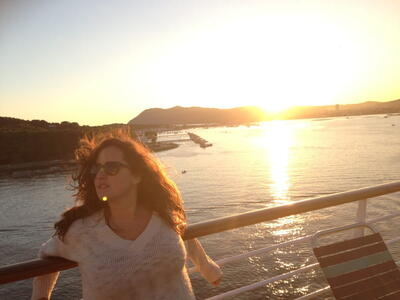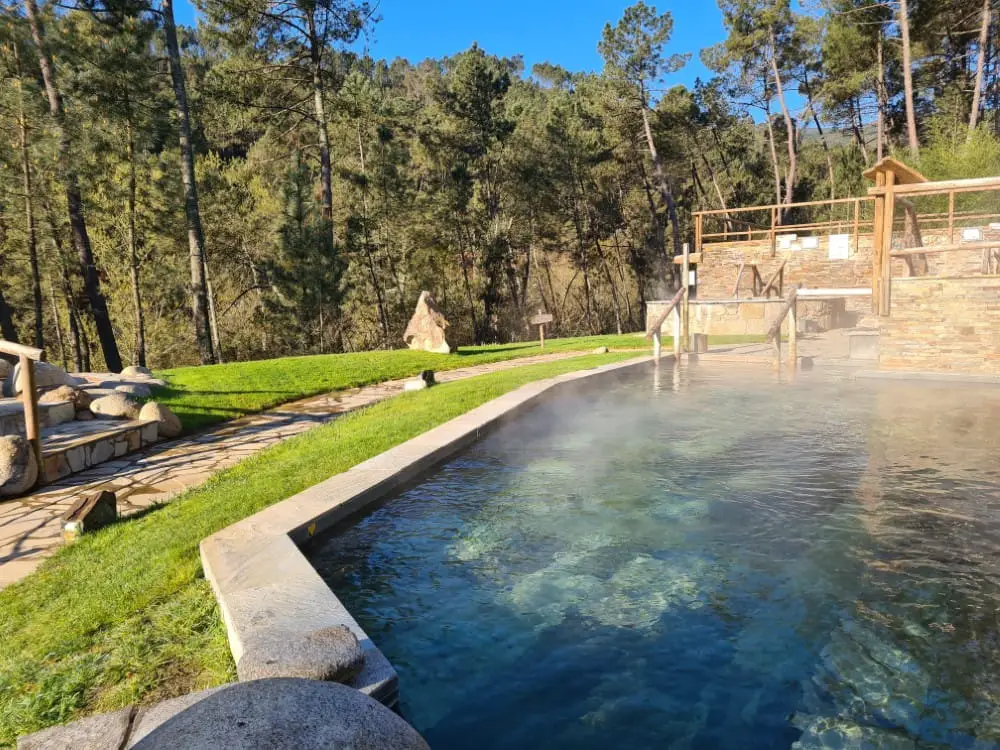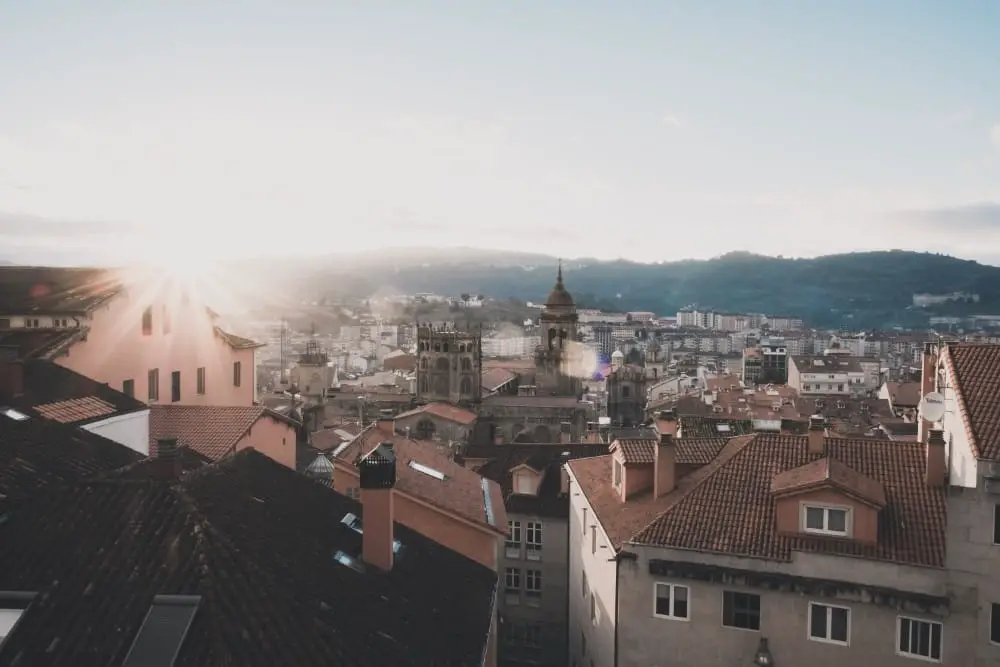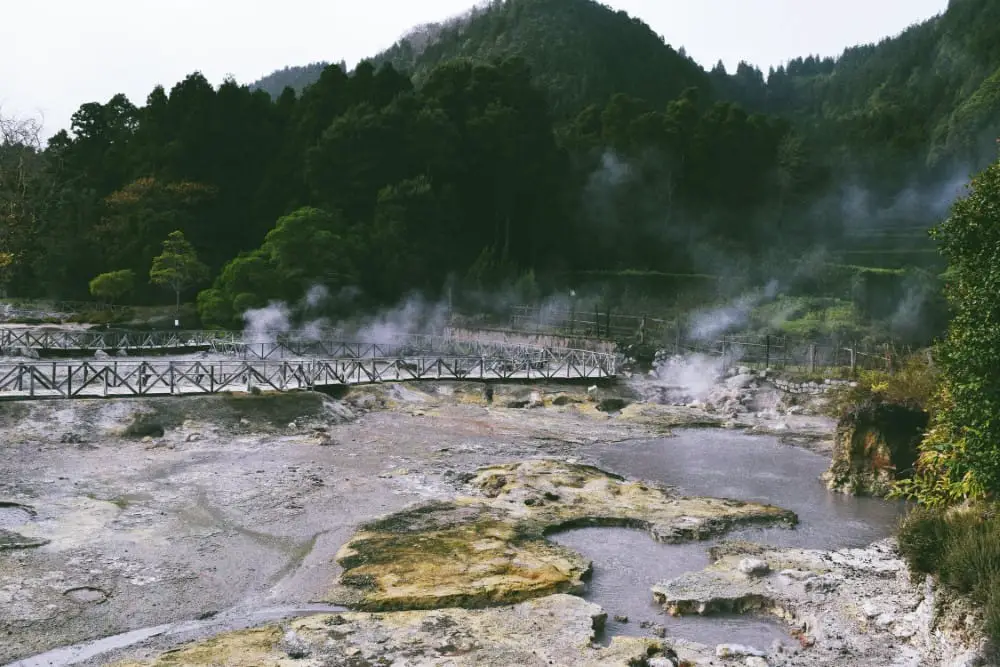
Thermal from its origin
The very origin of the city is linked to the intense thermal activity of the area, activity, which, of course, reaches to the present day. It was Roman legionaries who established the first settlement in the area, called Aquis Aurienses, precisely to take advantage of the properties of the waters here. The Romans were the most organized -they cannot be accused of the contrary-, but previous settlers of the area already enjoyed this gift of nature: the thermal baths of Ourense.
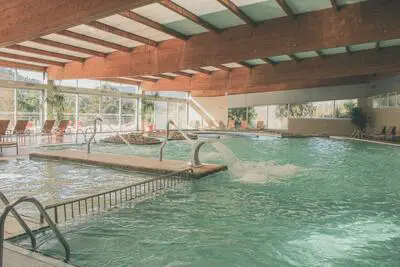
Are you looking for a spa in Galicia to take care of your health?
HAVE A LOOK TO OUR WEB BROWSER TO FIND SPAs IN SPAIN!
Ourense city
It is clear that the capital of the province,the city of Ourense is a great destination to enjoy the warm mineral-medicinal waters in the various options it offers, thanks to the large amount of water that runs under the city: long aquifers at great depth, which spring to the surface with a huge flow and high temperatures. In fact, one of the theories about the origin of the toponym Ourense refers to the thermal waters. According to this theory, the name of the city would come from the existence of "scorching waters" in its territory. These thermal waters are formed due to the filtration of rainwater through the fractures of the granitic soil. Upon reaching the lower layers of the earth, they come into contact with the earth's plates and heat up. The interplay of internal pressures causes them to flow back to the surface, acquiring the mineral properties of the rocks through which they flow.
Note: before visiting them it is advisable to consult the possible contraindications in the links of each thermal space and, in all cases, it is necessary to wear bathing clothes, towel-albornoz and appropriate footwear (ideally, crabbing or booties). Schedules may vary depending on the time of year.
As Burgas
The fountains of As Burgas that we know today were built between the 17th and 19th centuries. This group of burgas is located in the historic center of the city and is composed of three different ones: Burga de Arriba, Burga do medio (attached to the wall and modern in style) and Burga de Abaixo. The thermal complex of as Burgas, one of the most famous among the thermal baths of Ourense, was listed as Historic-Artistic Ensemble in 1975 and Cultural Monument in 2007.
As a example of the intense activity of thermal waters in the area of the Burgas, note that there are other thermal springs in a radius of less than 300 meters. Among others, those that nourish the so-called Baños de Outeiro, an old bathhouse in Progreso street (number 19), where the waters emerge at temperatures between 22ºC and 45ºC; as well as the five springs that fed the now non-existent baths of "La Moderna", in Rastro street (number 1), whose temperatures are between 47ºC and 57ºC.
All information about the Recinto Termal de las Burgas

Thermal route in Ourense
But not all the thermal activity is in the city center. The so-called Ruta Termal starts on the right bank of the Miño river, a few meters from the Millennium Bridge. Thus, if the visitor takes the enormous Millennium Bridge as a reference, he can enjoy a succession of 7 thermal circuits: A Chavasqueira, O Tinteiro, Muíño da Veiga, Termas de Outariz, Piscinas de Outariz, and Burga de Canedo, as well as the Reza spring at the end of the route. It is always advisable to check with the Office of Tourism of Ourense before visiting the Ourense hot springs near the river, to make sure they are in operation (it is common for them to flood due to river flooding) and the exact opening hours. Doing the seven kilometers tour on foot is highly recommended, as it is beautiful, since it runs along the banks of the Minho. However, it can also be accessed by public transport (see the indications in relation to each thermal bath), in the tourist Tren das Termas or by private car, as there are several places enabled for parking.
A Chavasqueira
Also known as Caldas do Bispo (in reference to Cardinal Quevedo, who ordered to condition them for sick visitors), the thermal area of A Chavasqueira is divided into two parts: small free thermal baths and a paying thermal station. Access is easy, as it has an urban bus stop (line 26, Chavasqueira-Residencia) and free parking nearby.
All information about of Termas A Chavasqueira
O Tinteiro
At only 500 meters from A Chavasqueira, and after a reflexotherapy path called Xardín terapéutico dos pes descalzos (Barefoot therapeutic garden) you will find O Tinteiro, which we could define as a spring-viewpoint.
Medicinal waters flow in various basins that flow at more than 40ºC and are recommended for skin conditions. Since long ago they have been attributed healing powers: wound healing, against acne, varicose ulcers, atopic eczema, etc.. They are weakly mineralized, alkaline, sulfurized, fluoridated and mesothermal waters.
Muíño da Veiga
Following the road, just over 2 kilometers away from O Tinteiro and surrounded by riverside vegetation, lies the Muíño da Veiga thermal complex. This thermal circuit is located next to a mill (from which it takes its name) and on the very shore of the Miño river, an ideal place for sunbathing after a swim.
All information about Termas do Muiño da Veiga
Termas de Outariz
It is the largest thermal area in the municipality of Ourense. It has a thermal station (Termas de Outariz) and two free thermal areas: Pozas de Outariz and Burga de Canedo (each one on one side of the footbridge that connects them).
All information about Termas de Outariz,
Fonte de Reza and Paseo das Ninfas
Leaving behind Outariz, a path runs along the left bank of the river Miño. It is called Paseo das Ninfas and takes the walker to the Reza fountain. This fountain, which works by pumping (as in Western movies) is fed by a vein that crosses the river from the other side, with water very similar to those of O Tinteiro. The water comes out of the spring at 32ºC and is weakly mineralized, alkaline, sulphurous and fluoridated, with beneficial properties for the skin and anti-catarrhal. It is easy to get here following the Thermal Route, by city bus (line 5, Reza-Ceboliño) or by car.
.jpg?itok=GhMCVwBr)
Are you looking for a spa in Ourense?
HAVE A LOOK TO OUR WEB BROWSER TO FIND SPAS IN THE PROVINCE OF OURENSE!
Leaving the capital behind: Ribadavía, Cenlle, Lobios and Bande
Termas de Prexigueiro
In our thermal tour of the province of Ourense, we now approach the beautiful Ribadavia. A few kilometers from this village are, surrounded by forests, the Termas de Prexigueiro. Specifically, it is located in the parish of Francelos and is certainly worth the visit.
All information about the Termas Prexigueiro
Termas de Cenlle o Pozas de Barbantes
These hot springs, with free access, are located in a large garden area with picnic areas and have 3 thermal water pools with warm water -between 21 and 28 ºC-. They are located in the municipality of Cenlle, in the parish of A Barca de Barbantes (San Antón).
The Termas de Cenlle are locatedon one of the banks of the river Miño and have a large parking area, showers, toilets and a small bar (as well as an area for motorhomes). The waters that flow in the Termas de Cenlle are hypothermal waters of weak mineralization, bicarbonated, alkaline, sodium, magnesium and chloride. They are especially indicated for arthritis, rheumatism and skin problems.
For those who enjoy hiking, in the surroundings there are several routes of different lengths: Paseo Termal do Miño, Calzada Romana or Cova da Moura, among others. There is also a Sports Orienteering Circuit that follows a route marked by signposts.
Note: consult the schedule before visiting, as they are not open all year round.
Termas de Lobios in Rio Caldo
Again, we mention a hot springs with free access and located in the middle of nature. They are of Roman origin and were located near the settlement Aquis Originis, which was reached by the Via Romana XVIII (also called Via Nova) that served as a connection between Bracara Augusta and Asturica Augusta (i.e. between Braga and Astorga). These thermal baths are located in the parish of Lobios and are known as "Os Baños"
Bathing can be enjoyed both in the enabled thermal pool and in certain areas of the riverbed itself. In addition, there is a large recreational area and a river beach in the area. The waters that flow here arise between 55ºC and 77ºC and due to their mineralization are bicarbonate-sodium and fluorinated. They are especially indicated for the digestive, respiratory, dermatological, hepatic, rheumatic and arthritic conditions.
Bande and its famous Aquis Querquernnis
The Bande area is known for the impressive remains of the Roman settlement Aquis Querquernnis. We all know that the Romans were "piraved" by the warm waters that flowed from the earth. Of course, Bande is not an exception: here flow at 14 liters per second abundant thermal waters at a temperature between 36ºC and 48ºC. They are waters of weak mineralization, with bicarbonate-sodium, lithium and fluoride composition, to which are attributed beneficial properties against rheumatism and skin diseases, as well as for the digestive system and respiratory tract. The thermal baths of Bande are composed of three pools and several thermal springs, immersed in a beautiful landscape, specifically in the place of Porto Quintela, in the municipality of Bande, on the shore of the reservoir of the Conchas (which until not long ago flooded the area of the thermal baths). The visitor can live a very special experience, since the bathing is done in the same Roman bathtubs recovered.

Subscribe to our newsletter and
GET OUR FREE GUIDE "7 TIPS TO PREPARE YOUR RELAX GETAWAY!What happens in O Carballiño?
Let's focus for a moment on the area of O Carballiño, also famous for its gastronomic tradition of octopus. This area -close to the provincial capital- has half a dozen areas of great thermal importance. Of course, the most famous are the Gran Balneario do Carballiño or Caldas de Partovia, but there are also others that are more unknown.
O Carballiño is an area of great agricultural, livestock and commercial activity. The capital of the region was born in direct relation to the fair, but quickly acquired fame for its thermal waters.
Gran Balneario de O Carballiño
The Gran Balneario is fed by the most important spring of mineral-medicinal waters in the region. Close to the Municipal Park, the Gran Balneario, which opened its doors at the beginning of the 19th century, is located on the left bank of the Armenteiro River, surrounded by a grove of centenary oak and beech trees.
All information about the Gran Balneario de O Carballiño
Caldas de Partovia Health Resort
Various researchers say that the Romans already enjoyed the waters of this spa located 2 kilometers from the town of O Carballiño. During the Middle Ages would be the monks of the monastery of Oseira those who benefited from its properties, until it comes into municipal hands in the nineteenth century, century in which it would open its doors as a "modern" spa. After a reform, in 2017, this spa with a long history arrives to our days fully adapted to the present and inserted in the natural environment that surrounds it.
All information about the Caldas de Partovia Health Resort
Baniño de Arcos
Also in the capital of the region, O Carballiño, is located the one known as O Bañiño de Arcos, next to the Arenteiro river. Equipped with fountain and pond with cover, it is located at the end of the walk that runs along the bank of the Arenteiro river. The waters that flow here are indicated for dermatological and hepatic conditions.
.jpg?itok=GhMCVwBr)
Are you looking for a health resort in the province of Ourense?
HAVE A LOOK TO OUR WEB BROWSEER TO FIND HEALTH RESORTS IN OURENSE!
Other lesser-known hot springs
In O Carballiño
Thermal waters also spring up in Brués, Moldes and Ponterriza -all in the municipality of Boborás-, in A Rañoa (Maside), Sona (Partovia) and in Punxín
The Caldas de Brués spring is located on the left bank of the Viñao river, very close to its course. It is close to several population centers: Riande, Conchouso, Souto and Fontenla. Currently there is a pile excavated in the rock from where a flow of 4 liters per second at a temperature of about 27ºC can be found. They are waters of weak mineralization, sodium bicarbonate, fluoride and sulfur (hence the smell of rotten eggs around). Due to their properties, they are indicated for the digestive system, liver, rheumatism, arthritis, metabolic diseases, respiratory tract and dermatological conditions.
Also in Ponterriza there isa thermal spring with a certain reputation for healing, located near a small bridge that crosses the river. The set where the fountain is located is completed with a washing place and a cruceiro. This fountain is quite forgotten by the authorities.
The same seems to happen in the case of A Rañoa, 500 meters from Maside, whose environment is in poor condition. This thermal space, where two pools (one for adults and one for children) and a fountain are located, is fed by four natural springs that supply water at about 21ºC, with a weakly mineralized sodium bicarbonate-sulfur composition, ideal for digestive, liver and kidney disorders.
In Punxín are the Termas de Quintas, a thermal area next to the river Barbantiño, consisting of two small pools of slate and stone. The temperatures of the waters that feed these pools exceed 27ºC. In the vicinity there is a small river beach.
Fonte Piñeira and Fonte do Sapo
Very close to the town of Castro Caldelas is the spring of Fonte Piñeira, collected in a kind of circular reservoir. The flowing water is poured into a small stream. The smell of rotten eggs makes clear the presence of sulfur in its waters (alkaline, sulfur and fluorinated). These waters -especially indicated for rheumatological, dermatological and digestive processes - flow at a temperature of 12ºC. For its part, the Fonte do Sapo spring, located 2 kilometers from the center of Verín and inserted in a recreational area and in the Verín-Chaves-Vidago Thermal Route is this spring, one of the most popular in the town. It has a great reputation in relation to treatments for respiratory and dermatological problems.
.jpg?itok=GhMCVwBr)
Are you looking for a health resort in the province of Ourense?
TAKE A LOOK TO OUR WEB BROWSER TO FIND SPAS IN OURENSE!
Spas and health resorts in the province of Ourense
Cortegada Health Resort
Of modernist spirit, this health resort was built in 1937 next to the waters of the Miño river and surrounded by nature. However, the waters of its springs have been used since the early 19th century (although they were known before).
All information about Cortegada Health Spa
Health resort and Hotel of Arnoia
The hotel-health resort of Arnoia was built in 1995, in a privileged location next to the river Miño, in the heart of the Ribeiro. It is surrounded by mountains and gardens and only 34 kilometers away from the capital and 5 kilometers from the town of Ribadavia.
All information about the Arnoia Caldaria Hotel and Health Resort
Banos de Molgas Hotel-Health Resort.
At the very gates of the Ribeira Sacra, in the middle of the valley of O Medo, is the town of Baños de Molgas (about 24 kilometers from the city of Ourense), where this famous hotel-spa is located. It is a rural area that is bathed by three rivers -Tioira, Sor and Arnoia (next to which the hotel-spa is located)- and populated by large groves of trees.
All information about he Baños de Molgas Hotel-Health Resort.
Burga de Baños de Molgas
Also in the immediate vicinity of the Arnoia river, specifically next to the Ponte Vella ("old bridge"), is the Burga de Baños de Molgas. It is a public thermal spring, fed by waters that gush forth at temperatures between 28ºC and 49ºC. They are especially indicated for the treatment of rheumatism, arthritis and gout. The hot water flows through a pipe inserted in a 19th century fountain and is poured into a quadrangular basin, to be conducted to two stone pylons (one for washing and the other for bathing area) protected by a cover.
Hotel-Health Resort of Laias
In 2001, with the turn of the millennium, the thermal village of Laias was inaugurated, on the banks of the river Miño, in the municipality of Cenlle. There was a previous spa in the area, but it was flooded by the Castrelo de Miño reservoir. The spa of Laias, located in the heart of the region famous for Ribeiro wine, is about 15 kilometers from Ourense, 17 from Ribadavia and 23 from O Carballiño.
Full details of Laias Caldaria Hotel Balneario.
Hotel and Health Resort of Lobios
In 2002 the Villa Termal de Lobios, located in the village of Riocaldo, very close to the Baixa Limia - Xurés natural park and about 70 kilometers from Ourense, opened to the public. In 1773 the local residents built a small thermal bathhouse, with common rest areas and different services, which remained active until the 20th century. However, the construction of the current spa uncovered archaeological remains of ancient Roman baths.
All information about Lobios Caldaria Hotel and Health Resort
The peculiar case of the Balneario de Berán
Situated in the Ourense town of Berán, in the municipality of Leiro, there is a thermal spring with waters at temperatures of about 28ºC and which are indicated for respiratory, hepatic, digestive and dermatological problems. These waters nourish two complexes. The first of these, known as the Old Health Resort (Balneario VIejo), is in operation and features an open-air pool, as well as several individual bathtubs, changing rooms, showers and a fountain for drinking the waters. The "Balneario Nuevo" (New Health Resort), however, has remained closed for many years after its construction.
.jpg?itok=GhMCVwBr)
Are you looking for a health resort in the province of Ourense?
TAKE A LOOK TO OUR WEB BROWSER TO FIND HEALTH RESORTS IN OURENSE!
Health resorts and hotels with health resort in Ourense are currently abandoned
Augas de Vilaza-Requeixo Health resort
Located in the municipality of Monterrei, in the area of Requeixo, this space is owned by the company Augas de Fontenova S.A. -like the old bottling plant-, it is in a state of abandonment, apparently awaiting projects to recover the facilities (two buildings, a buvette area and a service warehouse) and recondition the surroundings. The waters that flow here are bicarbonated, sodium, lithium and fluoride and emerge at a temperature of 20ºC. Because of their characteristics, they are especially indicated for hepato-digestive, renal and urinary disorders.
Hotel-health resort of Cabreiroá
Cabreiroá is known especially for its bottled water. However, although it remains closed since 1961, the Hotel-Balneario de Cabreiroá enjoyed renown for years. It is located just over 1 kilometer from the center of the town of Verín and is fed by bicarbonated, sodium, lithium and acidulous waters, which flow at 18ºC.
Mondón Health Resort
The ferruginous waters that flow in the place gave rise to the Mondón Spa, located in the place of Santo Tomás de Beto, founded in 1903. The facilities included a chapel dedicated to Santo Tomás, a bathhouse and lodging. The construction of the Santa Eulalia reservoir in 1967 led to its definitive abandonment by greatly increasing its isolation.
Santiago das Caldas Health Resort
Several springs - Las Cladas, La Piedra, Santa Lucía and Burga - supplied a public and uncovered bath, which held 24 people and of which there are documented references since the 17th century. In the last third of the 19th century new facilities were built for the enjoyment of its alkaline, silicate and sulfhydric waters, which flow at 39ºC. It has been abandoned since the 1970s.
Bembibre Health Resort
Although there are different proposals to revitalize the area, it is still inactive today. It was the quality of the waters (bicarbonated, radioactive and sulfurized) that gave fame to the spring that would eventually give rise to the spa of Bembibre.The facilities were active between 1896 (date of construction of the building) until 1956, although its use and fame go back centuries.
Caldeliñas Health Resort
Along with Sousas it was one of the most popular springs in the Verín area. In fact, both shared medical direction and settled the development of thermalism in Verín (with Cabreiroá and Fontenova). The Caldeliñas health resort facilities were in operation from 1890, when the first constructions are documented, until 1946. Bicarbonate-sodium, lithium and fluoride waters, with an upwelling temperature of 24ºC, flow from this spring.
Balneario de Sousas
Its bicarbonate-sodium, lithium and fluoride waters were widely used since Roman times. It would be, however, since its discovery in the eighteenth century when its fame increases, which will lead to the construction of the first source in the early nineteenth century. It would live several extensions and would be in operation until the 1960s. Today, only the bottling plant is still in operation, although the garden area and the buvette can also be visited.
All information about the Health Resort de Sousas
Fontenova Spa
The Fontenova spa, located in the municipality of Verín, opened its doors in 1907, the year in which the quality of its waters was also awarded. In 1933 it would incorporate a bottling plant and, after the Civil War, the establishment would become inactive. It remains so today, although you can visit its old facilities, where the protagonists were the bicarbonated-sodium, carbonated and fluoridated waters, with an upwelling temperature of 18ºC.
This is the end of our tour of the thermal wonders of the province of Ourense. We hope you have found it interesting and we encourage you to enjoy all these wonders!

Subscribe to our newsletter and
GET OUR FREE GUIDE "7 TIPS TO PREPARE YOUR RELAX GETAWAY!"

